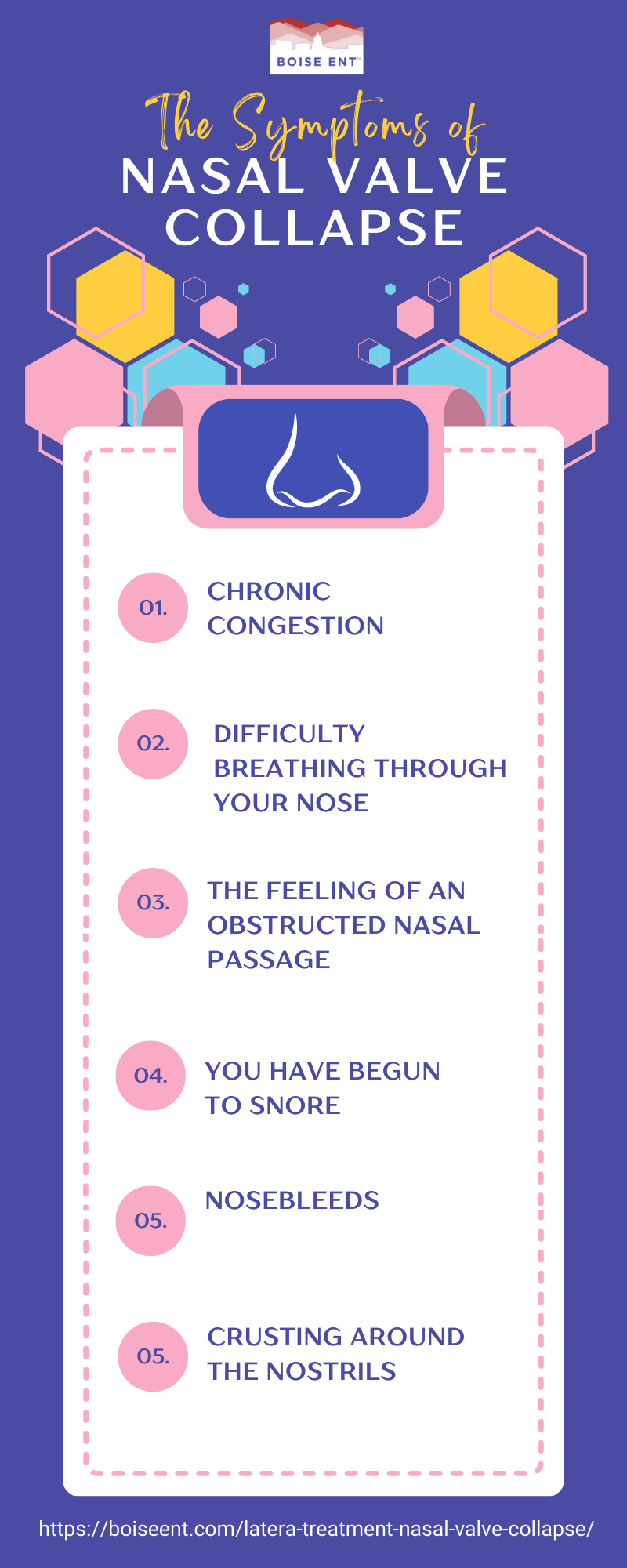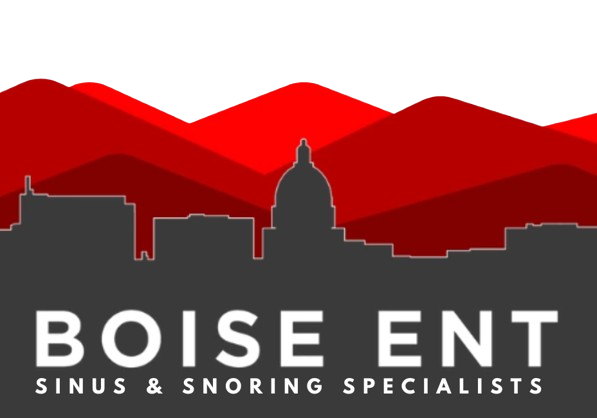Understanding Nasal Valve Collapse
The nasal valve is a narrow area in the nasal passage about halfway up the nose responsible for regulating airflow during breathing. Nasal valve collapse, also known as stenosis, occurs when the cartilage or tissue that supports the nasal valve in the nose weakens or becomes too narrow. This leads to symptoms such as nasal congestion, difficulty breathing through the nose, and overall reduced quality of life.
 What Causes Nasal Valve Collapse?
What Causes Nasal Valve Collapse?
There are a number of reasons that a person could end up suffering from a nasal valve collapse in their nose.
- If they have sustained an injury or trauma to the nose.
- If they have a structural defect in their nose such as overly narrow nostrils they could be more susceptible to nasal valve collapse
- If they have had plastic surgery or rhinoplasty performed on their nose they could also end up dealing with a nasal valve collapse
Depending on how severe your nasal valve collapse is you could end up with some obstruction in your breathing or a completely blocked nasal airway. For more significant cases the problem of nostril collapse is visible on inspiration. Other times an internal exam of the nose is needed to confirm that the nasal valve has collapsed.
Symptoms of Nasal Valve Collapse
If your breathing has changed recently and you find it more difficult to breathe through your nose you might be wondering ‘How can I tell if I have a nasal valve collapse?’ There are many symptoms to watch for that could mean you have a collapsed nasal valve, some of these include:
- Chronic Congestion
- Difficulty Breathing Through Your Nose
- The Feeling of An Obstructed Nasal Passage
- You Have Begun To Snore
- Nosebleeds
- Crusting Around the Nostrils
These symptoms could mean a nasal valve collapse, or they could mean a different nasal issue. If you are having trouble with your nose it is always best to book an appointment with an experienced ENT doctor near you for a proper diagnosis and treatment plan.
What is the Latera Treatment For Nasal Valve Collapse?
The Latera treatment is a minimally invasive procedure designed to address nasal valve collapse. It involves the placement of a small, flexible implant called the Latera implant. The implant is made of a bioabsorbable material that provides structural support to the weakened nasal valve, reducing airflow obstruction and improving nasal breathing.
What Are The Benefits of the Latera Treatment?
The Latera treatment offers many benefits to people who are dealing with difficulty breathing due to a collapsed nasal valve. Some of these include:
- Improved Nasal Breathing: The Latera implant reinforces the nasal valve, helping to open the airway and alleviate nasal obstruction, allowing for improved airflow during breathing.
- Minimally Invasive: The procedure is performed under local anesthesia on an outpatient basis, meaning you can typically return home on the same day.
- Quick Recovery: The recovery period is generally shorter compared to more invasive surgical options, allowing you to resume your daily activities relatively soon.
- Long-lasting Results: The Latera implant is designed to gradually dissolve while providing lasting structural support to the nasal valve.
How Does The Latera Treatment Work?
Before the Procedure:
Your healthcare provider will conduct a thorough evaluation of your nasal condition and medical history to determine if the Latera treatment is suitable for you. They may also perform additional tests, such as nasal endoscopy or imaging, to assess the severity of your nasal valve collapse.
During the Procedure:
The Latera treatment is typically performed in a clinic or an outpatient setting. Your healthcare provider will administer local anesthesia to ensure your comfort during the procedure. They will make a small incision inside your nostril and place the Latera implant in the appropriate location to provide support to the weakened nasal valve. The implant is positioned to optimize airflow without causing any discomfort.
After the Procedure:
Following the Latera treatment, you may experience mild discomfort, swelling, or bruising, which are typically temporary and subside within a few days. Your healthcare provider may provide you with instructions on how to manage these symptoms, such as applying ice packs or taking over-the-counter pain medications if necessary.
Recovery and Follow-up:
Your healthcare provider will guide you on the post-procedure care instructions, including any restrictions on physical activity or nasal hygiene practices. They may schedule follow-up appointments to monitor your progress, evaluate the implant’s effectiveness, and address any concerns or questions you may have.
Potential Risks and Complications of The Latera Treatment For Nasal Valve Collapse
While the Latera treatment is generally safe and well-tolerated, as with any medical procedure, there are potential risks and complications. These may include infection, bleeding, implant displacement, persistent symptoms, or the need for additional treatments. It is important to discuss these potential risks with your healthcare provider before making a decision.
Speak to A Ears, Nose, Throat Specialist Near You About the Latera Treatment
The Latera treatment offers a minimally invasive approach to address nasal valve collapse, improving nasal breathing and overall quality of life. By providing structural support to the weakened nasal valve, the Latera implant can help alleviate nasal obstruction and enhance airflow. Remember to consult with your healthcare provider to determine if this treatment is suitable for your specific condition and to address any concerns you may have. If you live in the Boise, ID area and are dealing with a collapsed nasal valve, difficulty breathing, or an obstructed nasal passage contact our office to book an initial consultation to see if the Latera treatment could be right for you. (208)-229-2368
Wishing you improved nasal health and a better quality of life.
